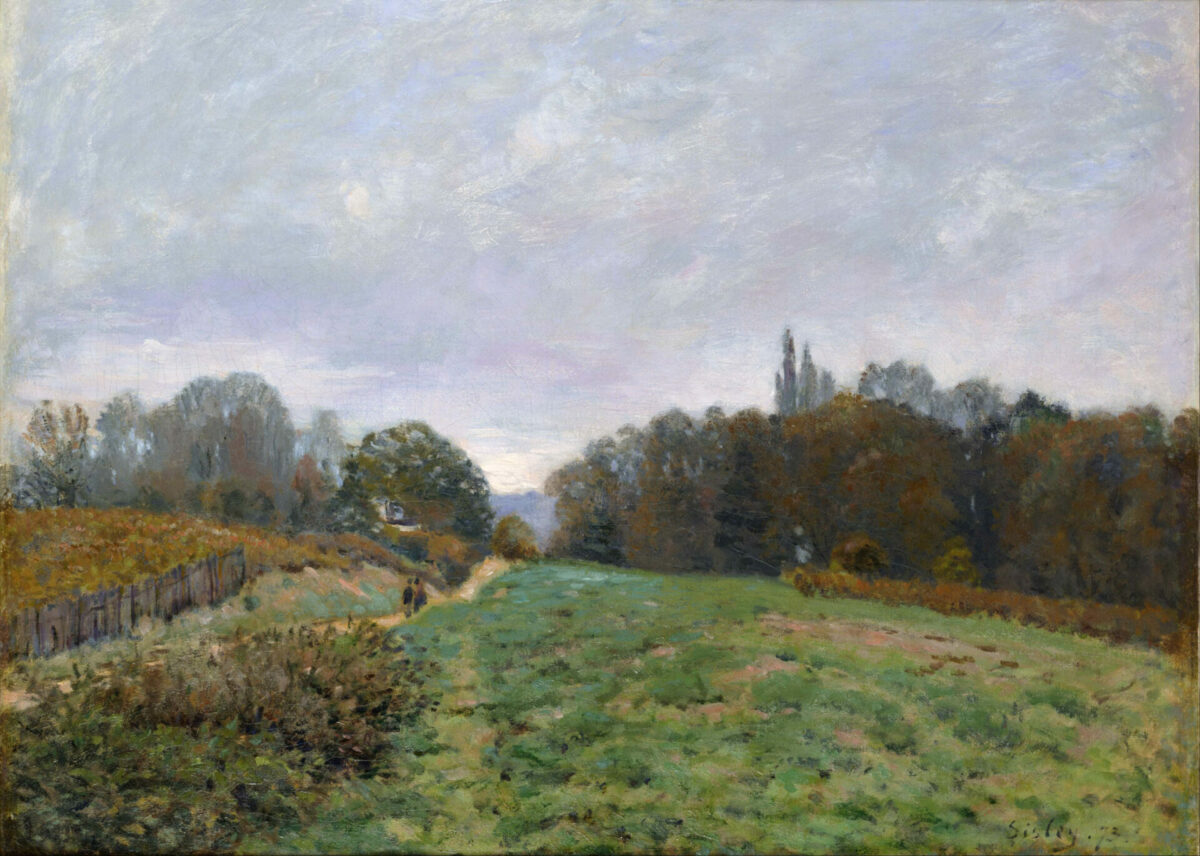This essay was originally delivered, in a slightly different form, as the plenary address at the Ozarks Area Writing Symposium, a gathering of English teachers in the Ozarks region, hosted at College of the Ozarks in March 2023.
Point Lookout, Missouri. My title is “Composition as the Art of Loading Brush,” which I’m stealing, more or less from a short story by Wendell Berry, “The Art of Loading Brush,” collected in Berry’s recent volume How It Went. The story presents a provocative philosophy of education that can help us navigate contemporary challenges in teaching writing, especially the problems posed by new forms of computer-generated text.
First, a look at Berry’s story “The Art of Loading Brush.” As with all of Berry’s fiction, the story serves as an installment in the imagined history of the fictional small town of Port William, Kentucky, a history Berry has traced from the Civil War up to today. Andy Catlett, the protagonist, is old—he has counted off the decades living on his farm in Port William: the 60s, the 70s, the 80s, the 90s, the 2000s, the 2010s. Like many another small town, Port William has lost population and much of its local economy. And so when Andy needs a fence replaced, he’s short on options: he’s too old to do the labor himself, and the neighbors who might once have helped him with the job are gone. He hires a contractor, Shad Harbison—which turns out to be a mistake. Harbison’s crew work poorly, disregard his instructions, waste materials, make a mess. They do complete the job, however, and depart, leaving Andy with the cleanup and his outrage over a job badly done.
To deal with the mess, Andy enlists the help of “a good boy from down at Hargrave, Austin Page,” who is “intelligent, eager to learn, willing to work, and humorous enough to put up with the correction he sometimes received.” Now in college, Austin is majoring in music, but he’s home for the summer and looking for work.
Andy and Austin begin to clean up the mess that Shad Harbison’s crew left behind, gathering brush and loading it into a wagon. At first, Austin, in the flush of his youthful strength, grabs a branch and hurls it haphazardly onto the wagon.
Andy said, “Austin, my good boy, damn it, wait a minute. We ain’t going to make a mess to clean up a mess. Do you want to put one load into three loads or into one load?”
He looked at Austin until Austin said, “Well. Obviously. I would rather put one load into one load.”
Andy saw that Austin’s ears were turning red, and he was amused, but he said fairly sternly, “Well, come and pick up that branch you just threw on and turn it over so it takes up less room. Now snug the butt up against the headboard of the wagon.
“That’s right,” he said. “That’s the way we do it. We pick up every piece and look at it and put it on the load in the place where it belongs. We think of the shape of every limb and stem and chunk and pole, and that’s the way we shape the load.
“It’s the use of the mind,” he said, “what they ought to be teaching you in school.”
Andy and Austin continue to work together, and the load takes form. Austin’s work improves.
“Now,” [Andy] said, “we’re practicing the art of loading brush. It is a fundamental art. An indispensible art. Now I know about your ‘fine arts,’ your music and literature and all that—I’ve been to school too—and I’m telling you they’re optional. The art of loading brush is not optional.”
“You talking about symphonies?” Austin had stopped and was standing still to signify the importance, to him, of symphonies.
“Symphonies! Hell yes!” Andy said. “You take a society of people who can write symphonies and conduct symphonies and play symphonies and can’t put on a decent load of brush, they’re going to be shit out of luck.” . . .
“My dear Austin, my good boy, maybe it’s possible to blow things up and burn things up and tear things down and throw things away and make music all at the same time. Some, it looks like, think you can. But: if you don’t have people, a lot of people, whose hands can make order of whatever they pick up, you’re going to be shit out of luck. And in my opinion, if the art of loading brush dies out, the art of making music finally will die out too. You tell your professors, when you go back, that you met an old provincial man, a leftover, who told you: No high culture without low culture, and when low culture is the scarcest it is the highest.”
Andy and Austin carry on their work of “low culture,” stacking a neat load of brush, throughout the day. The pile the brush—neatly—in a gully where Andy hopes to use it to hold back erosion. And so their work is done. “About as far as it could be done in Andy’s lifetime, they had undone the bad work of the fencers. Maybe they had helped a little the healing of the hurt world. And he was proud of the boy.”
I think this story can help us think about teaching writing well. Approaching writing as “the art of loading brush” can help us embrace aspects of good writing that other approaches neglect, and it can help us resist the biggest challenges to writing and the constructive use of language today.
Approaches to composition in college writing have long formed under the shadow of the scholar David Bartholomae, who prioritizes academic convention and critical thinking in college writing. He asserts that each time students write for a college class, they must “invent the university,” constructing for themselves their own new understanding of the rhetorical situation, the context for their writing. Good pedagogy for Bartholomae must help students master these discourse conventions. Self-expression may be valuable, but a student who can express herself but can’t navigate the university will face limits on her progress. Moreover, since it is in the university that the vanguard of critical thinking advances, students can best do interesting thinking by mastering those conventions.
Now, Bartholomae’s side has pretty much won the day in contemporary higher education. Although I suspect matters are rather different in high schools, on the college level instructors have moved away from personal writing and toward inculcating the rules of the academic game. You can see this approach in Gerald Graff and Cindy Berkenstein’s first-year composition textbook They Say / I Say: The Moves that Matter in Academic Writing. Instructors are encouraged to foster critical thinking skills and initiation into academic discourse by teaching with a focus upon rhetorical conventions appropriate to academic writing. Courses stress just two traditional canons of rhetoric—invention and organization—and revolve around nonfiction essays that align with academic convention. Even as composition pedagogy has searched for the next big thing after the Bartholomaen paradigm, this latter mode has remained ascendent, and even if it does not structure high-school pedagogy directly, high school instructors still feel its effects insofar as they need to prepare their students for college writing according to these pedagogical emphases.
There’s much that’s valuable in the Bartholomaen paradigm. Undoubtedly, it’s valuable for student to learn to think analytically, and the “moves that matter” approach can help students do so. But teaching with an exclusive focus on academic discourse and critical thinking has two major limitations.
First, a pedagogy centered on critical thinking elevates invention and organization but neglects written style. I don’t know about you, but in my education as an English major nobody ever tried to help me learn to write with greater beauty or encouraged me to develop a distinctive personal style. I learned to write competently and clearly, but my undergraduate and graduate writing was stylistically dull, employing predictable syntactical rhythms, weak verb choices, and the typical haze of qualifications required by writing the plays in the academic game. When I was trained to teach college writing, I was similarly encouraged to keep the focus on clarity and argumentation, not style. No wonder so much academic writing is tiresome, verbose, and poorly crafted. Surely we ought to be able to do more than one thing at a time, to help students craft arguments while also shaping their prose toward something more stylish.
The second issue with a pedagogy centered on critical thinking is even more pressing. In an age of computer-generated text, a pedagogy centered upon critical thinking and argumentative “moves” carries within it the seeds of its own destruction.
Critical thinking is inherently derivative, taking apart something that has already been built—it unmasks, interrogates, deconstructs, but never erects, answers, or builds. As such, an education that stresses critique above all will produce a culture that stagnates, full of thinkers who can produce penetrating critiques of a systems they could never build or maintain. This limitation of critique would be sufficient enough to demonstrate that writing teachers need to cultivate more than critical thinking, but if that’s not bad enough, consider how easy it is for a clever student to play-act critical analysis. The writer Ted Gioia has pointed out that he more or less faked his way through his college English classes by writing mostly three papers;
-
First, the TWIT (short for They Were Idiots Then), which exposes the ways old books don’t align with contemporary values.
-
Second, the DIM (Deep Inner Meaning), which reveals that (for instance) Moby-Dick isn’t about whale hunting, but something—anything—else, as long as it’s not obvious.
- And finally, The Old Switcheroo, which argues that everything we think is actually its opposite. King Lear is not a tragedy, but a comedy; The Odyssey is actually about Penelope; and so on.
Gioia points out that these “critical” analyses are largely fraudulent, reflecting little real thought on the writer’s part and more a shallow imitation of literary criticism. And yet they served, for Gioia and other students, as reliable means of impressing teachers who advance “critical thinking” as the only goal of writing. Since critical analysis follows certain “moves that matter,” it shouldn’t surprise us that students can imitate the critical “moves” without doing the thinking.
And it shouldn’t surprise us, either, if large language models like ChatGPT can also imitate basic models of critical thinking. While ChatGPT may not yet be able to produce an argument like the DIM or The Old Switcheroo, the formulaic nature of these analyses means it’s only a matter of time. Such arguments are predictable enough that a statistical language model ought to be able to produce them reliably and fluently.
In contrast, an approach to composition as the art of loading brush would not center around critique, but around an ethos of care and attention to detail—an attempt to make something rather than take something apart. As such, it would prioritize style, creativity, and verbal play over formulaic critical argumentation. It would teach students to write with individual style and to work well in making something—qualities that a statistical model of language will struggle to emulate.
The dirty word of much writing pedagogy has been “mechanics.” Teachers trained in the Bartholomaen paradigm have learned to revere critical thinking and writing process and to scorn mere tinkering with grammatical correctness, simple adjustment of the words on the page. We have been taught that we ought to aim for something higher. Perhaps—the thought inevitably arises—we ought to hand over “mere mechanics” to the machines, let an algorithm check our spelling, and get on with the work of higher thought.
To teach writing as the art of loading brush, however, is to recognize that tinkering with mechanics, if done thoughtfully and carefully, remains, as Andy Catlett would have it, “the use of the mind, what they ought to be teaching you in school.” Writers aren’t machines, but we might be mechanics. Rather than practicing a mindlessly repetitive skill, we practice an act of embodied cognition, calling on all the senses and a carefully honed sense of what works and what doesn’t, much as a master mechanic has a feel for an engine and what makes it run smoothly or falter.
Composition as the art of loading brush suggests that we should not prioritize a critical habit of mind but should rather embrace and exalt making things with language. We should help students write good sentences and paragraphs, help them tinker and make order with the smallest building blocks of language. The genre doesn’t particularly matter; no matter what we ask students to write, we ought to choose projects that encourage them to see themselves not so much as critics, but as laborers in the fields of text, laying out a line of words.
To teach writing as the art of loading brush means that we recognize that what we teach in college or high school composition classrooms is not an act of high culture but of low culture. Accordingly, the qualities needed for teaching writing are less those associated with high culture—creativity, inspiration, sophistication, critique—and more those associated with Andy Catlett’s labor with brush: care, attention to detail, method, order. If students don’t have creative impulses or sophisticated ideas, our society will survive. If they can’t make order out of their thoughts and words, though, we’ll be shit out of luck.
Such an approach to composition as the art of loading brush does not exclude teaching academic writing, but it does insist that students master the fundamentals of language and style first. Mastering critique is actually complex—the great critics never simply write a DIM paper or The Old Switcheroo. Accordingly, critique is a high art that involves multiple considerations of content, form, and mechanics. We will do best not to ask students to practice such a high art until they have gained fluency in the fundamental art of shaping sentences.
Whereas teaching academic writing risks offering students an easy way to fake their way through thinking, to teach composition as the art of loading brush is to teach “a fundamental art” that everyone needs—an art of care, attention to detail, and precision—and to teach something that can’t be faked and in many ways never gets easier. I labored over each word of this talk as sincerely, if more effectively, than ever I struggled to master a phrase as a freshman in college.
This approach to writing as the art of loading brush suggests that we’re going to have to get involved with teaching grammar, sentence structure, and punctuation. But it does not preclude dealing with ideas and concepts, insofar as we can encourage students to be orderly and pragmatic in their approach to ideas. Rather, it recognizes that teaching the “mechanics” of writing is teaching ideas—that without the low culture of writing mechanics, the high culture of argumentation and expression dies out.
We need not think of short writing assignments or those focused on the mechanics of language as “basic,” “elementary,” or without rigor. We’d do better to think of them as the low culture that properly and necessarily undergirds the high culture of advanced writing. And as low culture, such exercises are “not optional.”
Students who practice composition as the art of loading brush learn to be attentive to their language—not to rush by particular word choices in pursuit of an experience or a “big idea.” They learn to, as Berry says in another context, “think little,” to pay attention to the particular. An assignment in this model might turn on the choice of a single verb: for instance, students might need to grapple with the difference between “impels” and “makes,” or between “maintains” and “creates.” Or students might need to distinguish between the additive logic of a compound sentence and the subordinating logic of a complex sentence.
To teach and practice writing in such a manner makes all the more stark the contrast between the real work of writing and the deployment of AI chatbots. Such tools are inimical to all that we ought to value in writing: they produce language that is thoughtless, glib, superficial, and yet pervasive and seemingly impressive.
The philosopher of technology L.M Sacasas describes chatbots as “automated sophists,” indifferent to what is true or what is good. Indeed, these tools, Sacasas says, utterly lack intention, “whether malicious or benign.” They produce fluid and voluble text that means nothing because no meaning subject resides behind it. It lacks entirely the sensibility that Andy Catlett tries to teach Austin: rather than putting one stick on the load in the proper place, the student who writes an essay using a chatbot uses brute force to hurl sticks aimlessly onto an ever-churning conveyor belt, confident that the machine will never break down and that she will never be asked to account for her own language choices.
It would be a sufficient critique of the Bartholomaen paradigm in pedagogy that it does nothing to resist such a mechanization of writing. Indeed, so much of academic writing today is oriented to mere productivity without care, that we’ll see many scholars welcome these tools as more efficient ways of staying on the publish-or-perish treadmill, when they ought instead to be insisting that we all step off.
This technological situation offers us an opportunity to reframe our pedagogy. Requiring students to produce large amounts of text or formulaic “critical” analyses, is no longer a measure of rigor, if it ever was. AI has utterly devalued the large-scale production of fluid but familiar text. Good riddance. Instead, we have the opportunity to spur students to true and healing composition through the exercise of creativity, precision, care, and nuance. The best analytical writing assignments in the future may read a lot less like a traditional essay and more like poetry. “We pick up every [concept] and look at it and put it [in the draft] in the place where it belongs. We think of the shape of every [term and sentence and punctuation mark], and that’s the way we shape the load.”
Image Credit: Alfred Sisley, “Landscape at Louveciennes” (1873).







2 comments
Linda
Excellent points, much needed. For 26 years, I taught freshman composition at a state university and absolutely agree with your ideas here.
Thomas McCullough
I’d not read the Berry story, but I’d read the title somewhere and found it a strong image, concept and a lovable one. I’d completely missed the point because I’m an artist, a painter.
Comments are closed.